Best Time of Year to Find Baby Snakes in Southern California
Fall volition soon be upon us! As the temperatures absurd down we want to get outdoors and enjoy the milder weather at the turn of the flavor. But BEWARE! Snakes are as well active during this time of the year. Most snakebites occur between April and October when the weather condition is still warm and outdoor activities are popular. Fall is breeding and hatching flavor which makes males more aggressive equally they are trying to go the attention of female snakes. Newly hatched snakes are too aggressive equally they are trying to avert predators. Snakes are also preparing for hibernation or brumation (where they don't actually slumber but instead slow their metabolism to acclimate to the cooler temperatures) which makes them more active during this time of the year. Hither are some mutual snakes you may see in southern states and what yous can practise to keep them abroad from your domicile.
COMMON SNAKES IN THE SOUTHEAST:
Blackness RACER SNAKES
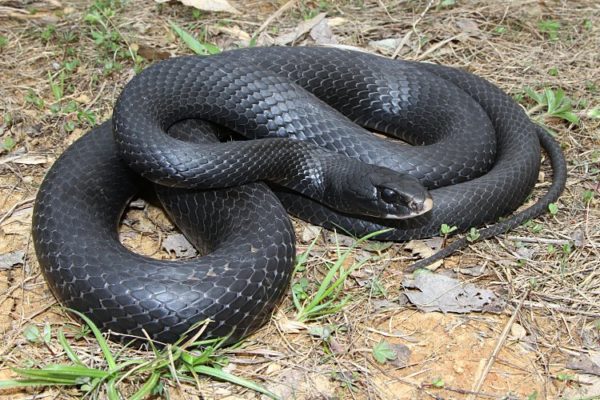
Black racers are big snakes (unremarkably over five feet long). They are slender and solid black in color, although some may have a white chin. They are often mistaken for other large, black snakes. Juveniles wait completely different, usually gray in color with darker blotches. They tend to flee quickly when threatened. They are found throughout the eastern US. They tin be plant in any habitat simply are more common in old fields, near forest edges, and the edges of wetlands. They are not-venomous just may bite if handled.
Chocolate-brown SNAKES
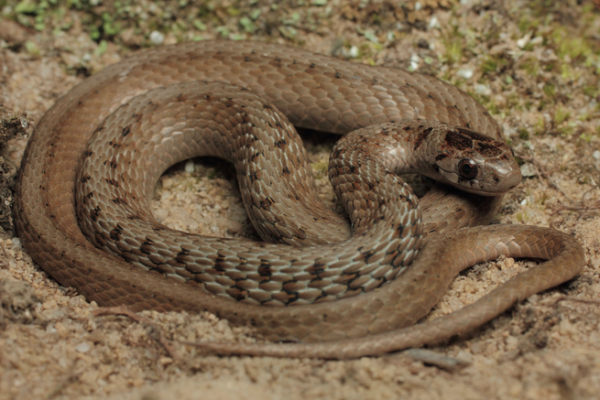
Brown snakes are small (usually only half-dozen-thirteen inches in length). Well-nigh of them are brownish in color merely they tin can xanthous, ruby-red, or grayish dark-brown and tin can have darker spots on their backs. They can be establish in wooded areas, near wetlands, and in urban areas. They are not establish in areas of loftier elevation. They similar to live under droppings in residential areas or any other expanse with enough groundcover. They are non-venomous but may bite if handled.
COPPERHEAD SNAKES
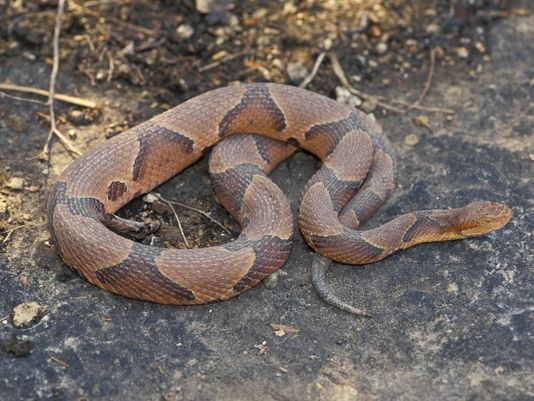
Copperheads are large snakes (ordinarily ii-4 feet long). They have a distinctly triangular shaped head. They are tan to brownish with darker hourglass shaped bands on their bodies. Juvenile copperheads take a singled-out xanthous-tipped tail. They are plant in semi-protected areas like woods and swamps but may also be found in urban areas. They are found throughout the central and eastern Us, with the exception of some parts of South Georgia and the entire state of Florida. They are venomous and may bite if they feel threatened.
CORAL SNAKES
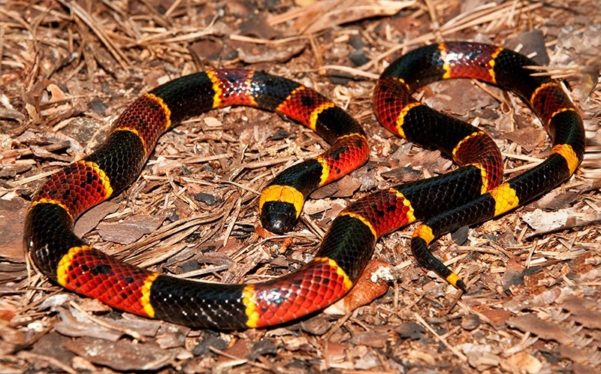
Coral snakes are medium sized (1.five to two.5 feet long). They are brightly colored cherry, yellow, and blackness. If they feel threatened, they will elevator up their tail and curl the tip over. Although they spend the bulk of their fourth dimension underground, they tin can be found in pino and scrub sandhill habitats, hardwood forests and pine flatwoods, and in suburban areas. They are establish throughout much of the southern coastal plain, although they are nigh common in Florida. They are venomous and may bite if they experience threatened.
GARTER SNAKES
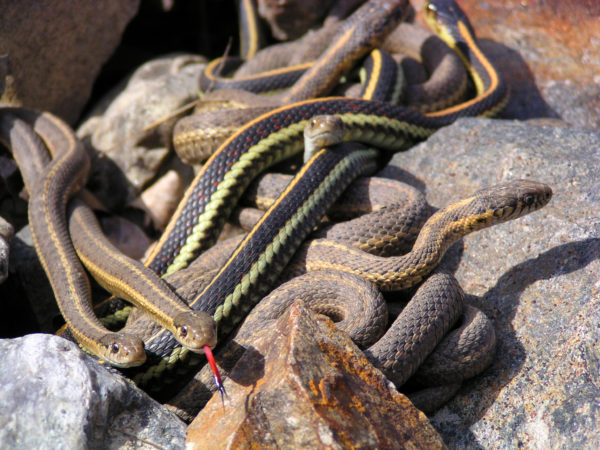
Garter snakes are small to medium sized (ane.five to iv feet long). They have dark colored bodies with 3 xanthous stripes running vertically. They prefer protected areas such every bit woods or marshes but are also common in grassy areas and around water. They are very mutual in suburban areas as long as there is adequate comprehend for them. They are common throughout the Southeast and most of the United states of america. They are not-venomous only may seize with teeth if handled.
KING SNAKES
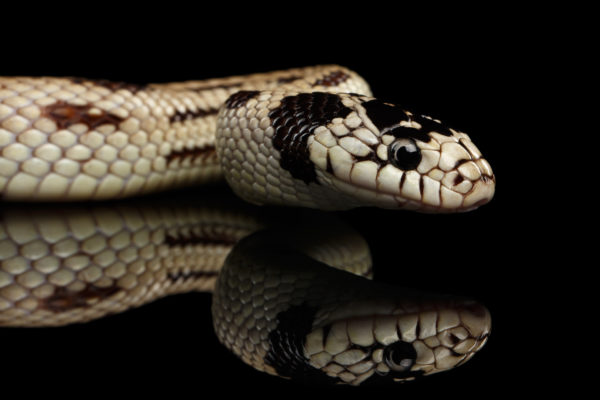
King snakes are large snakes (three-iv feet long). They are a shiny black colour with white or yellow bands. They have a rectangular looking head with a curt, blunt snout. They are found in protected areas such as woods, overgrown vegetation, and cluttered areas. They are found throughout the southeast US. They are non-venomous just may seize with teeth if handled or threatened.
RAT SNAKES
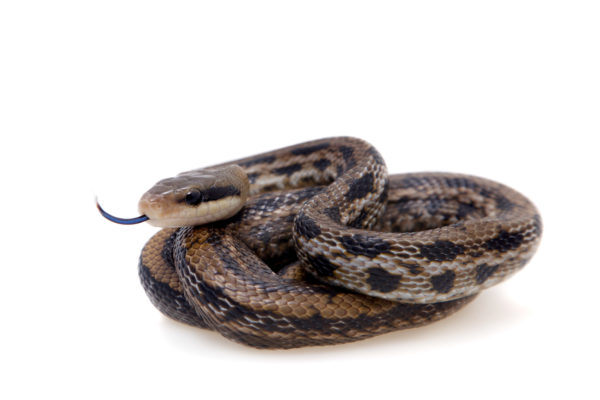
Rat snakes are big snakes (most three-5 feet long but some longer than 6 feet). Their coloring depends on the region they alive in and can be blackness, yellow with stripes, or grey with darker patches. They are found in semi-protected areas such as wood, overgrown vegetation, swamps, or abandoned and vacant buildings. They are found throughout the southeast US. They may climb for food. They are non-venomous but may bite if handled or threatened.
WATER MOCCASIN SNAKES
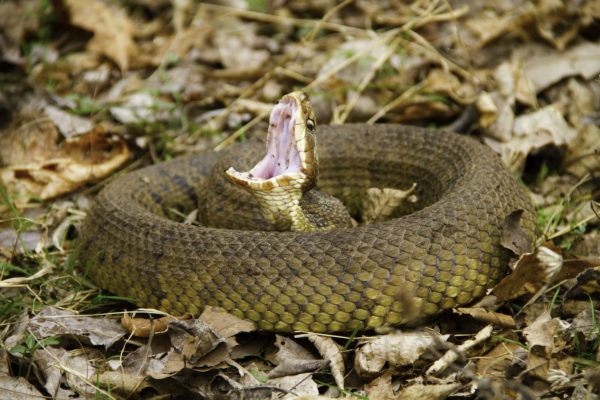
H2o moccasins are also known as cottonmouths. They are large snakes (2-4 feet long). Their color varies from solid brown to yellow with dark crossbands. Juveniles have a yellow-tipped tail. Their caput is distinctly triangular. When threatened they have a characteristic display with their head in the middle of their coiled body and their rima oris wide open. They are found in freshwater habitats, cypress swamps, river floodplains, and heavily vegetated wetlands. They are found throughout the southeast United states of america but are more than common in coastal regions. They are venomous snakes and may bite when threatened.
HOW TO AVOID SNAKES
While it is impossible to forbid snakes, there are things you can do to avoid them and set yourself and your family when you are enjoying the outdoors. Check out these 10 tips to avoid snakes:
- COVER YOUR Feet. If you are going to be outdoors in areas that are prone to snakes, don't article of clothing flip flops or sandals. Wear airtight toed shoes, preferably hiking boots and long pants.
- Avert TALL GRASS. If possible, avert areas with tall grass when yous are outdoors. If yous must walk through alpine grass, go on your feet and legs protected, continue a vigilant watch effectually you and make your presence known.
- Practice SOME RESEARCH. Cheque out our snake facts to a higher place and effort to avoid areas that are likely to accept snakes. Do some research ahead of fourth dimension and find out what snakes are almost common in your surface area, what they look like, and what habitats they live in.
- Expect Upwards. Many snakes can climb copse and can move from tree to tree past adjacent branches. Make sure to wait up when you are walking in wooded areas and vesture a hat if possible. This too applies if you are boating in areas with overhanging trees.
- WALK WITH Conviction. Snakes respond to vibrations from the ground and so they can experience you coming before they can see you. Walk with strong steps to make your presence known. They will ofttimes flee earlier you even see them.
- PAY Attending. Look around. Exist aware of your surroundings. Look downward when you are walking.
- Avoid HABITATS. Familiarize yourself with habitats common to snakes in your areas and avoid them. Stay away from big rocks, rock and woods piles, areas with heavy overgrowth, or any other area that snakes can use for cover.
- Cheque YOUR CAR. Snakes are known to take cover under cars, especially if you park your car in an area prone to snakes. They seek protection from predators while notwithstanding having a warm surface to lay on.
- PROTECT YOUR HOME. Seal any cracks and crevices around your domicile that might let snakes to come up in seeking warmth and nutrient. Remove debris and clutter from your yard and garage. Keep woods piles away from the business firm. Articulate overgrowth from your grand. Remove annihilation that could potentially exist used as cover for snakes.
- USE REPELLENT. At that place are many commercial snake repellents on the marketplace today, as well as several natural methods of serpent repellent. Discover the one that works best for you.
Source: https://www.callnorthwest.com/2017/09/common-snakes-in-fall/
0 Response to "Best Time of Year to Find Baby Snakes in Southern California"
Post a Comment